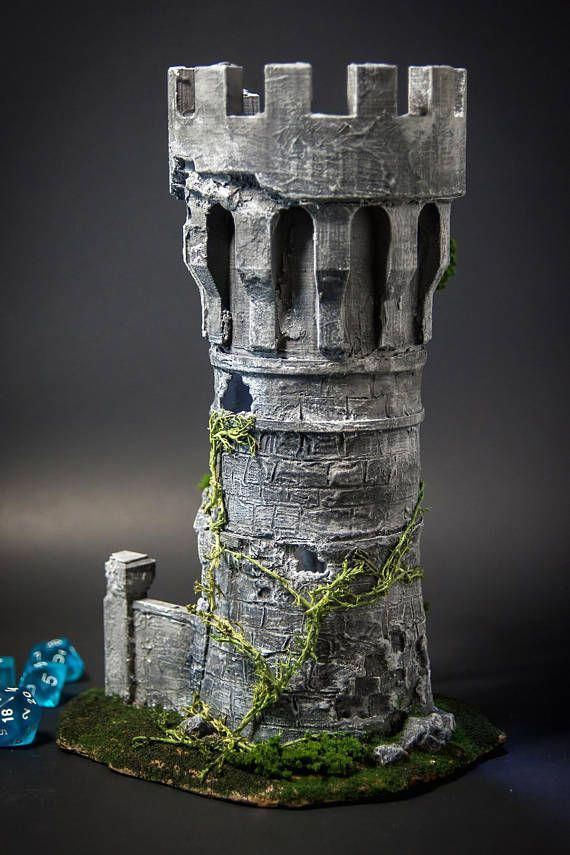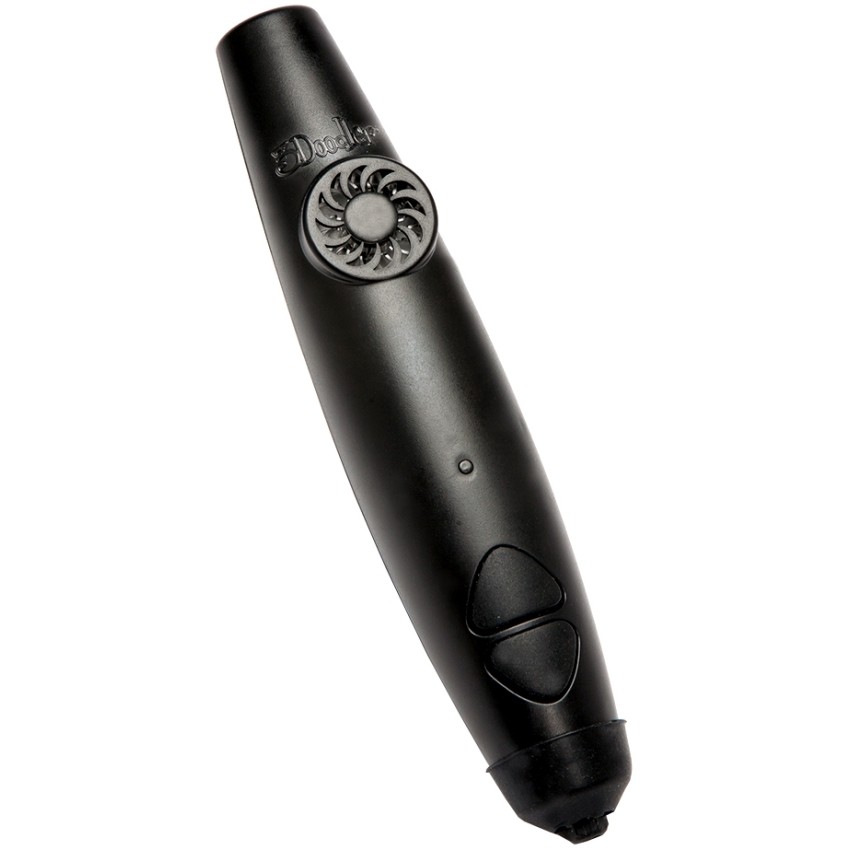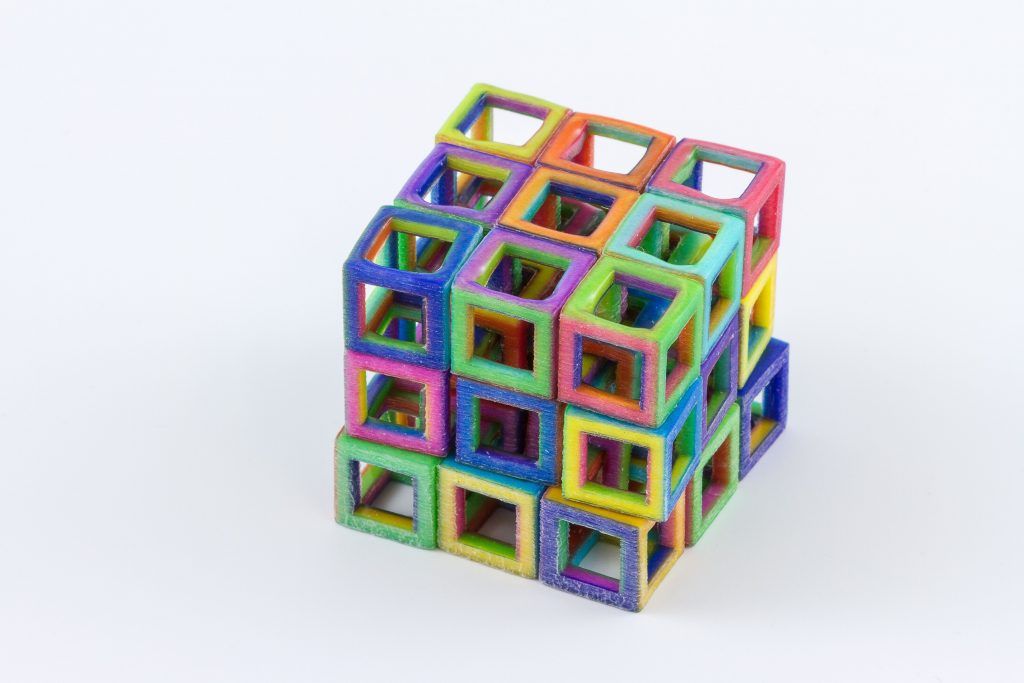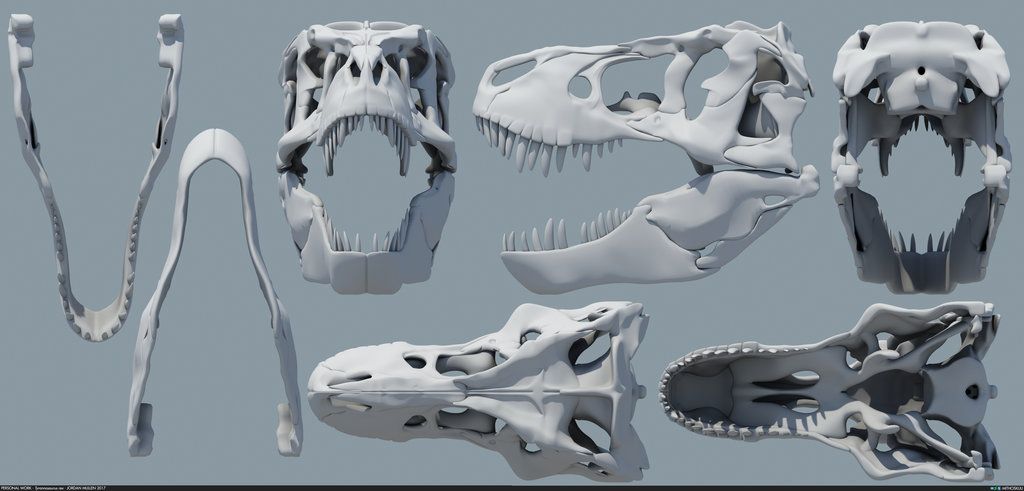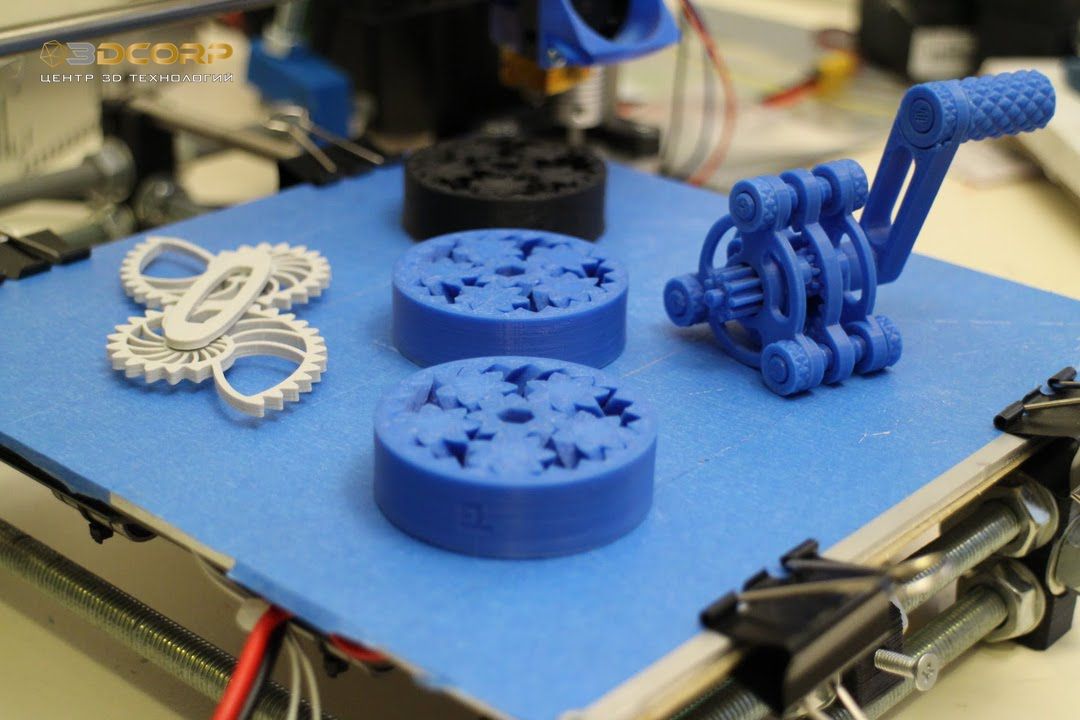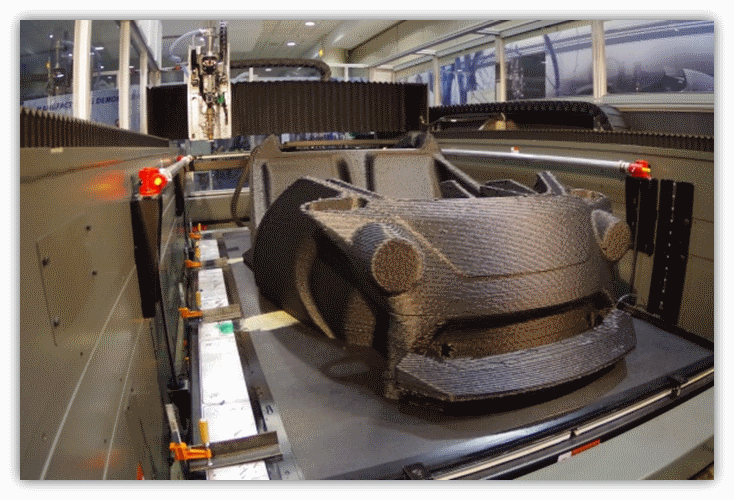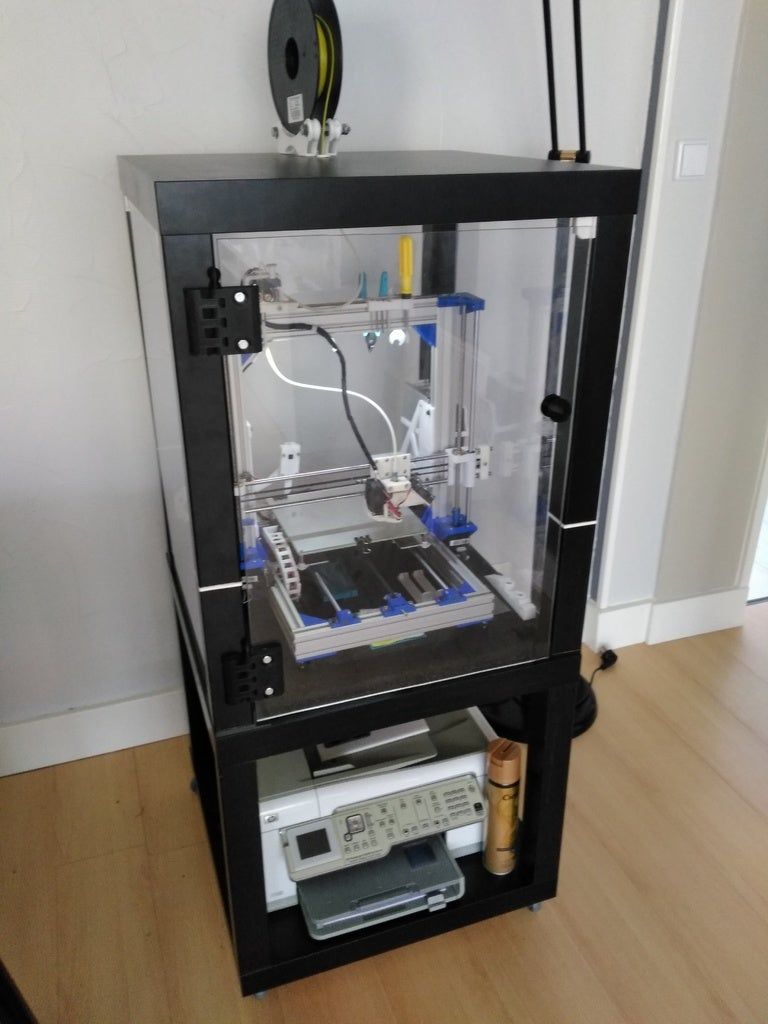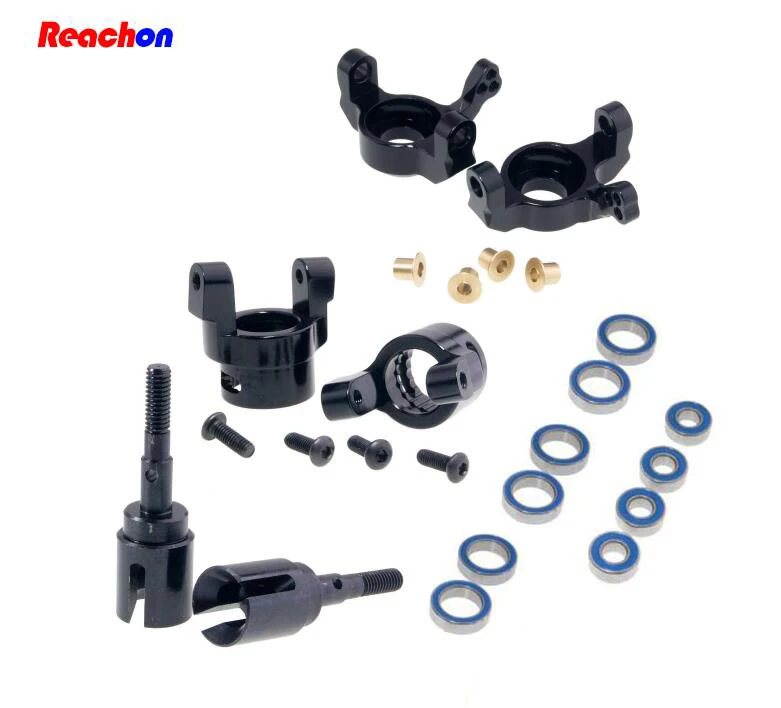3D printers in space
What Are the Applications for 3D Printing in Space?
Published on January 27, 2022 by Jamie D.
To infinity…and beyond! Who has not heard the iconic catchphrase from Toy Story which so perfectly encapsulates humanity’s desire to explore as far as they can reach? There is a reason why space is known as the final frontier, now we have reached the ends of the globe, it is the next region where we can take human innovation and our innate desire to explore. It is perhaps unsurprising then that additive manufacturing is now also being used to further humanity’s expansion. From satellites to rockets to food and more, we took a closer look at some of the most innovative ways that 3D printing is currently being used in Space!
Testing 3D Printing on the ISS
One of the major ways that 3D printing is currently present in space is through testing as astronauts on the ISS attempt to find whether AM is a viable technology to use even in micro-gravity. For example, Incus and the European Space Agency (ESA) have partnered to test Incus’ Lithography-based Metal Manufacturing process to see whether it would be viable for creating parts in a lunar base using scrap metal or existing surface materials. There are also experiments currently in the ISS to determine whether bioprinting could be used in the future to, in the words of the European Space Agency, “support medical treatment of long-duration space expeditions and planetary settlements.” These experiments are done in the BioFabrication Facility and recently a team from Wake Forest won a NASA challenge with their technology to create lab-grown human liver tissues using AM. Though there are even more experiments taking place including in Redwire’s Additive Manufacturing Facility.
Photo Credits: Incus GmbH
AM Could Make Structures on the Moon
You’ve heard of 3D printed homes on Earth, but did you know that NASA and other organizations are also looking into its potential for habitations on the Moon and other planets? Space colonization, or the hypothetical permanent settlement on celestial objects other than Earth, has been a consideration for many organizations for a few years now as they have put research into seeing whether it would be possible. And the lynchpin for many is whether we would be able to create settlements and additive manufacturing is looked to as the possible solution. There are a number of projects, starting with ICON’s Project Olympus which aims to test and develop prototypes for a possible future full-scale additive construction system that could print infrastructure on the Moon. Redwire has a similar idea as they have sent supplies for the Redwire Regolith Print (RRP) study to the ISS to determine whether it would be possible to 3D print with lunar regolith, loose rock and soil, to create on-demand habitats on other planets and the moon. And there are many more, including AI SpaceFactory’s Marsha Design which was a winner of the NASA Centennial Challenge’s 3D Printed Habitat Challenge, Luyten and ESA projects.
And the lynchpin for many is whether we would be able to create settlements and additive manufacturing is looked to as the possible solution. There are a number of projects, starting with ICON’s Project Olympus which aims to test and develop prototypes for a possible future full-scale additive construction system that could print infrastructure on the Moon. Redwire has a similar idea as they have sent supplies for the Redwire Regolith Print (RRP) study to the ISS to determine whether it would be possible to 3D print with lunar regolith, loose rock and soil, to create on-demand habitats on other planets and the moon. And there are many more, including AI SpaceFactory’s Marsha Design which was a winner of the NASA Centennial Challenge’s 3D Printed Habitat Challenge, Luyten and ESA projects.
Photo Credits: ICON
3D Printing is Used to Make Satellites
Additive manufacturing is also increasingly being used in space is for satellites. Currently, there are projects from a number of companies including Boeing and Airbus which have used additive manufacturing to create increasingly complex, lighter parts for their satellites. For example, Airbus used Additive Layer Manufacturing (ALM) to make radio frequency (RF) components for two Eurostar Neo satellites and MIT 3D printed ion-powered nanosatellite thrusters last year. More recently, Fleet Space in Australia even announced that it would be launching 3D printed satellites to sit alongside the Centauri constellation.
For example, Airbus used Additive Layer Manufacturing (ALM) to make radio frequency (RF) components for two Eurostar Neo satellites and MIT 3D printed ion-powered nanosatellite thrusters last year. More recently, Fleet Space in Australia even announced that it would be launching 3D printed satellites to sit alongside the Centauri constellation.
Photo Credits: Fleet Space
Exploration and Colonization of Mars
The colonization of another planet may still seem like science fiction, but for some it is increasingly becoming a reality. Man has been trying to “conquer” Mars for years now and 3D printing is the chosen tool to help in these efforts. Indeed, it is often considered as one of the most promising techniques for to inhabit the famous red planet. For example, NASA launched the Perseverance Rover to Mars in 2020, with eleven 3D printed metal parts and tools. These allowed for low mass and high-precision targeting not achievable with conventional manufacturing. The purpose of Perseverance is to search for signs of ancient microbial life.
Another projects comes from Delft University of Technology, who developed Zebro robots that will be able to tunnel under the surface of Mars to create 3D-printed underground habitats. The robots can communicate with each other and share tasks: digging tunnels and building 3D printed structures. The underground living space could be suitable for potential colonization since it is less exposed to thermal changes. Finally, the last ambitious project in the field has been completed by ICON and Big-Bjarke Ingels Groups for NASA: they have created a realistic simulation of a 3D printed habitat, called Mars Dune Alpha. The goal is to “transport” it to Mars to support long-duration exploratory space missions.
A preview of what Mars Dune Alpha will look like (photo credits: ICON)
3D Printed Thrusters
Additive Manufacturing is increasingly being used in aerospace and particularly space exploration for various applications. This is because it allows for lighter, cheaper and more efficient parts to be made due to the unique geometries that are possible with AM as well as the materials used.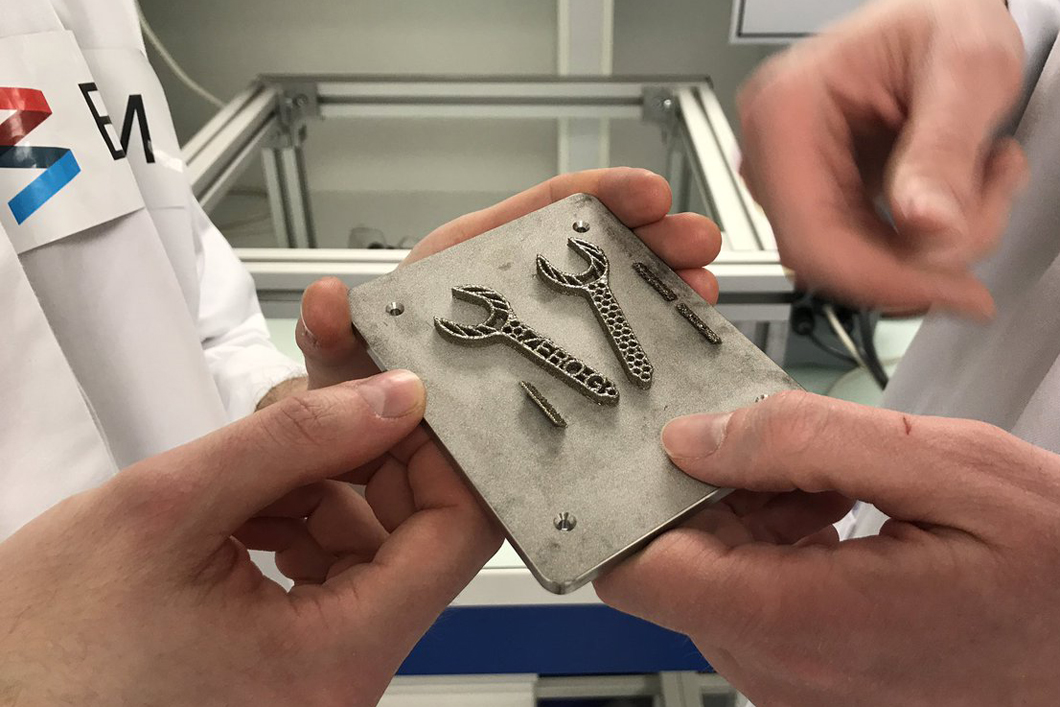 One such application involves using additive manufacturing for thrusters. One example is the case of the Griffin lunar lander.
One such application involves using additive manufacturing for thrusters. One example is the case of the Griffin lunar lander.
Astrobotic’s Griffin Mission One (GM1) team has partnered with Agile Space Industries to create custom 3D printed thrusters for the Griffin lunar lander, known as Attitude Control Thrusters (ACT). Griffin will be used by NASA to take the Volatines Investigating Polar Exploration Rover (VIPER) to the Moon’s South Pole in 2023. The mission is particularly important because the rover will be used to map the presence of ice on the Moon.
NASA’s VIPER on the surface of the Moon (photo credits: NASA Ames/Daniel Rutter)
3D Printed Rocket Engines
Many companies want to develop rocket engines quickly, and the easiest way to do that is to change manufacturing processes. As a result, space companies are turning to 3D printing. More and more often, engineers are using the SLS process to 3D print rocket engine parts with a copper alloy powder, which can withstand high temperatures. If we focus on the use of 3D printed rocket engines, we can find several recent projects, such as that of the Spanish company Pangea. This company develops and industrializes advanced 3D printed combustion devices made of innovative materials. They have designed a 3D printed rocket engine that is 15% more efficient than those traditionally produced.
If we focus on the use of 3D printed rocket engines, we can find several recent projects, such as that of the Spanish company Pangea. This company develops and industrializes advanced 3D printed combustion devices made of innovative materials. They have designed a 3D printed rocket engine that is 15% more efficient than those traditionally produced.
One of the most important companies in the space sector, NASA, is also designing the rockets of tomorrow with the RAMPT (Rapid Analysis and Manufacturing Propulsion Technology) project. Through this, NASA is using additive manufacturing to create large space rocket engines.And finally, 3D printer manufacturer SPEE3D received a $1.5 million grant from the Australian government for a project to use its patented cold spray technology to print rocket engines using metallic material, among other examples.
3D Printed Rockets
In addition to the production of specific parts, additive manufacturing is also being used in the aerospace industry for the creation of 3D printed rockets.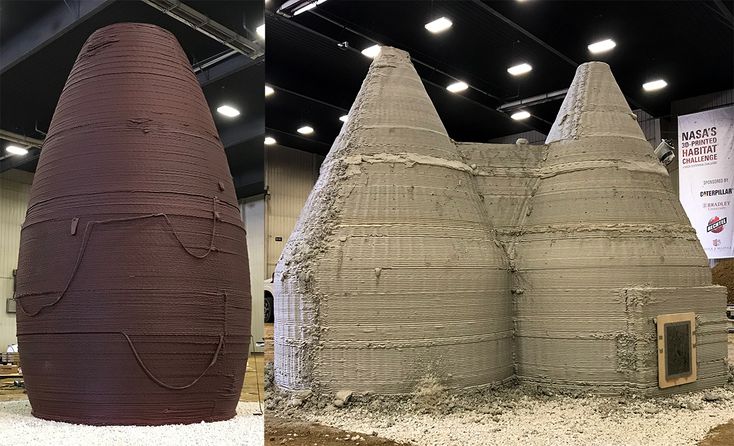 This growing trend is enabling companies in the industry to reduce the weight of final parts. Among them is Relativity Space, a U.S. startup that has experienced exponential growth in recent years, positioning itself as one of the 3D printing companies that has raised the most funds. Its Terran R project aims to be the first fully 3D printed and reusable rocket, which will be capable of launching more than 20,000 kg into low Earth orbit (LEO) in a reusable configuration. Terran R is scheduled to launch from Cape Canaveral starting in 2024.
This growing trend is enabling companies in the industry to reduce the weight of final parts. Among them is Relativity Space, a U.S. startup that has experienced exponential growth in recent years, positioning itself as one of the 3D printing companies that has raised the most funds. Its Terran R project aims to be the first fully 3D printed and reusable rocket, which will be capable of launching more than 20,000 kg into low Earth orbit (LEO) in a reusable configuration. Terran R is scheduled to launch from Cape Canaveral starting in 2024.
On the other hand, SpaceX began implementing additive manufacturing around 2014, with the goal of creating parts for its rockets. As of today, with its goal of colonizing Mars by 2050, SpaceX is using 3D metal printing (DMLS) to streamline the manufacturing process. In fact, the technology allows it to build rockets that can be reused as many times as necessary.
3D Printing Food in Space
Another challenge that the aerospace industry is facing is the creation of 3D printed food. In fact, several projects combining 3D technology with space food have emerged in recent years. One of them is starring the Israeli company Aleph Farms, which announced in 2019 its project to 3D print meat on board the International Space Station (ISS). Thanks to Bioprinting Solutions’ 3D printer, they managed to create a cell-based meat that retains the texture, flavor and structure of a classic steak. To do this, bovine cells were harvested on Earth and sent to space where they were cultured. In addition to this, Aleph Farms has also participated in the so-called Mission: Space Food. This is a consortium of space, food and technology experts creating an integrative approach to human nutrition in space. Together with the culinary and engineering expertise of the Astrea company, they aim to develop new space foods to help astronauts thrive in this field.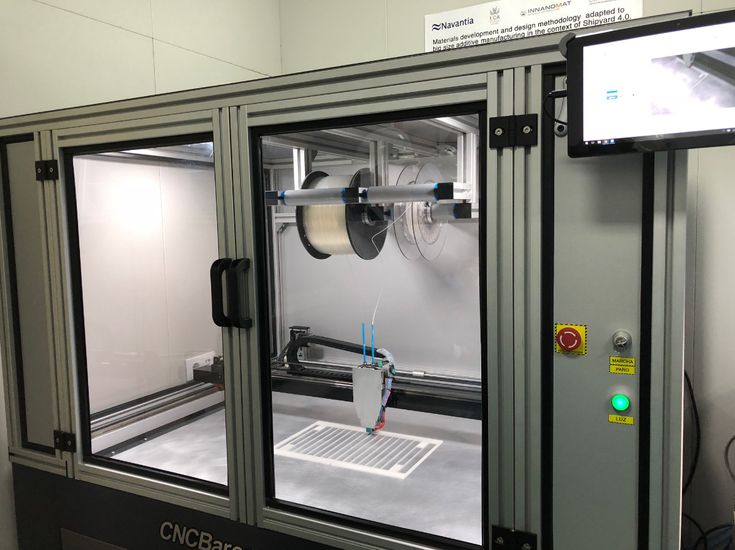
Photo Credits: Aleph Farms
Another such initiative comes from SMRC in collaboration with NASA, who sought to manufacture food for long-duration space missions. The goal was to create dishes through 3D printing that maintain pleasant flavors while including nutrients without degrading throughout the mission. NASA is also currently conducting a project in which it will recognize the work of a few companies that come up with innovative ways to get food into space. Of all the organizations that are participating, 4 of them have bet on 3D printing, being BigRedBites, ALSEC, Electric Cow and KEETA.
SpaceX’s 3D Printed Clothes for Astronauts
Another application of additive manufacturing in space is the creation of clothing needed for space missions. SpaceX has created 3D printed space suits and helmets that can be easily replicated with desktop 3D printers. Each helmet has a visor, valves, locks and microphones, and the suits meet the requirements of space travel. The FDM method of printing the helmets has been used to manufacture this apparel, as it provides a wider range of advanced materials, such as PEKK.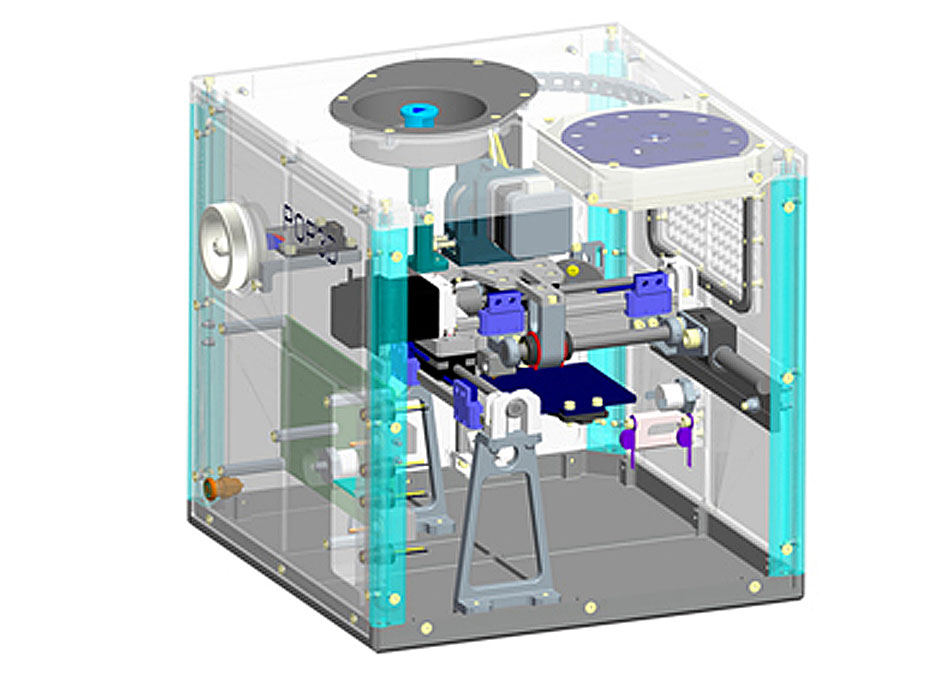
Photo Credits: SpaceX
What do you think of these 3D printing applications in space? Let us know in a comment below or on our Facebook and Twitter pages! Don’t forget to sign up for our free weekly Newsletter, with all the latest news in 3D printing delivered straight to your inbox!
3D printing in space - 3D printers for the space industry
Why is 3D printing important for the space industry?
3D printing could revolutionize space exploration by helping astronauts create objects in space and on-demand: replacement parts for repairs, custom equipment for scientific experiments, and even things like food or buildings!
Indeed, while space is an extreme environment with very few exploitable raw materials, there is plenty of dust floating around. 3D printing technology can allow you to build solid structures from aggregated dust and microscopic particles. The European Space Agency (ESA) is considering 3D printing their base on the moon.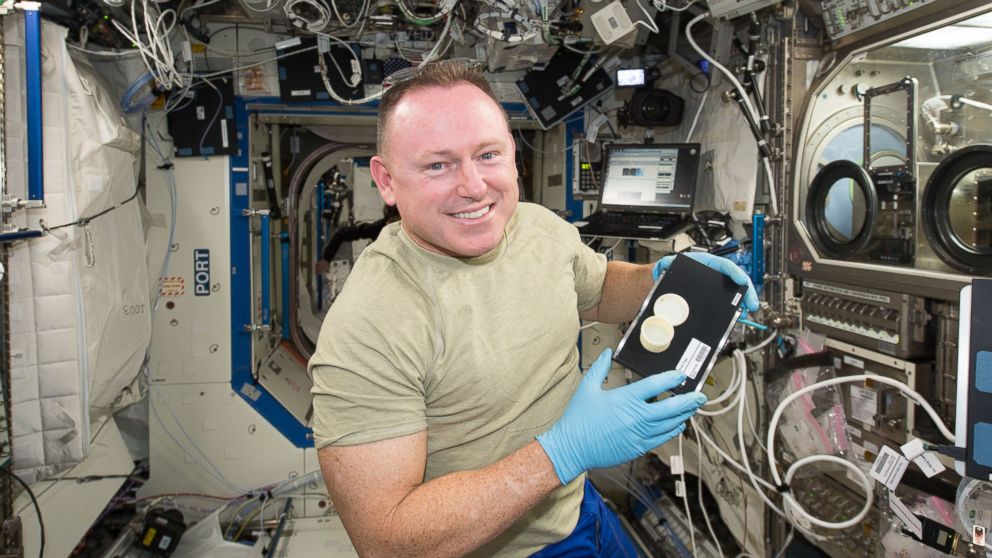
As for 3D printed meals for astronauts in space, NASA is funding a Systems and Materials Research Corporation project to develop a 3D food printer that can be used in a zero-gravity environment.
3D printing replacement parts in space
One of the main challenges that astronauts face is the lack of specific replacement parts on-board the space station.
A zero-gravity 3D printer
Thanks to 3D printing technology, it is now possible to manufacture spare parts in space. NASA and Made in Space are collaborating to solve that problem. The result of their experiments is the zero-G 3D printer, a 3D printer that can operate in zero-gravity environments.
They managed to produce a ratchet wrench from a 3D file that was emailed from Earth to the space station. This 3D printer uses the Fused Filament Fabrication technology (filament extrusion) and can print objects in plastic.
Ratchet 3D printed in space by the Zero G 3D printer.“Right now if something breaks, we’re completely dependent on launching a replacement from the ground. Imagine launching everything you might ever need for a mission to Mars or an asteroid, it would be challenging or impossible.”
Niki Werkheiser, Nasa project Manager
Future evolutions
In less than a week, the 3D file of the custom ratchet was designed, sent in space, and then manufactured by the 3D printer.
The next goal is to have a database of 3D files (STL files) of all the parts needed in the space station, in order to save time in case one of them breaks.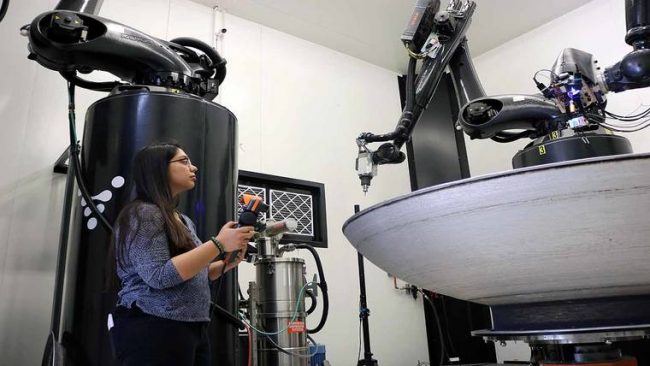
Being able to recycle 3D printed objects that are no longer needed and then reuse the material is also a big focus.
Solving the food problem with 3D printing
3D printing food in space
3D printers have the capacity to create a variety of products with a small amount of raw materials.
Thus, engineers found here the perfect technology for feeding astronauts on long-term space missions. NASA has invested $125,000 in SMRC, an ambitious project led by Anjan Contractor.
He succeeded in creating a food 3D printer able to 3D print pizza in space.
The different steps involved in 3D printing a pizza.Pizzas are ideal for 3D printer because they’re made of different layers on top of each other (great for additive technology process like 3D printing):
- A layer of dough is first deposited on the 3D printer’s heating bed to be directly cooked
- Second, a layer of water, oil, and tomato powder is applied (tomato sauce)
- Then, a layer of cheese is deposited
- Finally, animal and vegetal proteins are added to provide essential nutrients
This process allows to cook a pizza in a few minutes and, according to Anjan Contractor, to print carbs, proteins, macronutrients, and micronutrients that are stored in powder form within a special cartridge.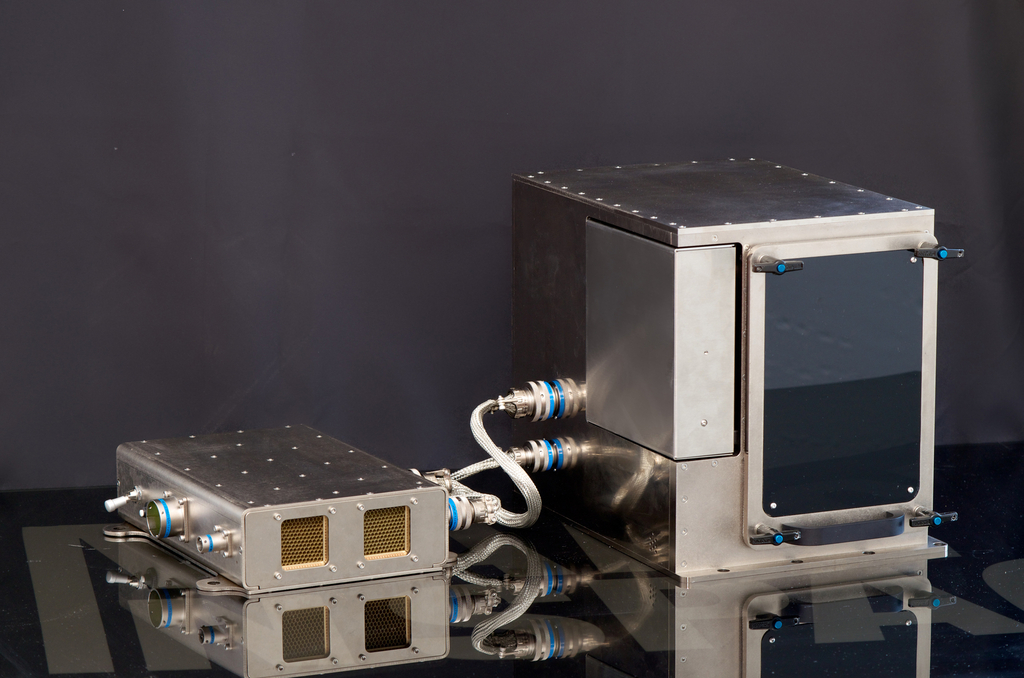 These powders remain edible for around 30 years, long enough for a mission to Mars.
These powders remain edible for around 30 years, long enough for a mission to Mars.
3D printing a lunar base
Building a lunar habitation to ease exploration and research
Thanks to the 3D printing technology, the European Space Agency hopes it will be one day able to 3D print a base on the moon. International architecture studio Foster + Partner designed such a structure in partnership with Monolite UK, which provides the 3D printer.
According to Foster + Partner, the base must be assembled around a dome built on Earth. This dome will filter gamma rays, solar radiation and meteorites impacts. On the moon, two 3D printers would finish the build and strengthen the structure by using raw materials found on the spot.
Monolite UK says that their construction 3D printer is able to achieve a complete base in less than two weeks. The next generation is claimed to be twice as fast as this one.
Case studies: 3D technology for spacecraft
The 3D printed thruster chamber from the European Space Agency
In June 2015, the ESA unveiled the world’s first 3D printed spacecraft thruster, including a platinum combustion chamber. The use of 3D printing offered several advantages:
The use of 3D printing offered several advantages:
- Similar performances to a traditional thruster
- Possibility to use new build materials
- Lower production cost and turnover
The 3D printed oxidizer valve from the Falcon 9 rocket by SpaceX
SpaceX announced in July 2014 that they had successfully 3D printed an oxidizer valve for the 1D engine used in the Falcon 9 rocket. The oxidizer valve is a crucial part of a rocket engine– it controls the flow of liquid oxygen as it enters the engine’s combustion chamber. It took only two days to 3D print this valve, while traditional manufacturing processes take up to months to build such parts.
The SpaceX rocket engine using the 3D printed oxidizer valve during a test phase.In addition, the 3D printed valve offers some key advantages, which have led SpaceX to decide to 3D print all of their oxidizer valves:
- Higher overall performances versus traditional manufacturing processes
- Higher resistance to fracture
- Superior ductility
The SuperDraco engine by SpaceX
SpaceX announced in May 2014 that their new rocket engine, the SuperDraco, had passed all the qualification tests (certifying metal 3D printed parts is a challenge).
The SuperDraco boasts 3D printed combustion chamber, which was 3D printed using the Direct Metal Laser Sintering process (DMLS). Elon Musk is enthusiastic about the future of additive manufacturing for the space industry:
“Through 3D printing, robust and high-performing engine parts can be created at a fraction of the cost and time of traditional manufacturing methods. SpaceX is pushing the boundaries of what additive manufacturing can do in the 21st century, ultimately making our vehicles more efficient, reliable, and robust than ever before.”
Elon Musk
3D printers in the space industry
In his 1955 short story "The Essential Thing", Robert Shaxley described a configurator that two astronauts took with them on an interstellar expedition in order to print whatever they might need in space, from ship parts to apple strudel for dessert. A little more than half a century has passed, and although reality has not surpassed the writer's imagination, it has come close to it. NASA is developing a 3D printer for printing parts directly on the ISS. Indeed, the development of 3D printers in the near future can significantly affect the space industry in general and the prospects for the development of individual design offices in particular.
NASA is developing a 3D printer for printing parts directly on the ISS. Indeed, the development of 3D printers in the near future can significantly affect the space industry in general and the prospects for the development of individual design offices in particular.
A 3D printer is a device that uses the method of layer-by-layer creation of a physical (solid-state) object from a digital 3D model. 3D printing can be done using a variety of materials: plastic, metal, stem cells, and even food components. There are also a lot of 3D printing technologies today, and new ones are constantly appearing. There are two main technologies for forming layers: laser and inkjet. The most commonly used are laser sterlitography and selective laser sintering.
Consider the existing and potential uses of 3D printers in astronautics and the space industry.
3D printers in space
3D printing can find application in space in the following promising areas:
1.
 3D printers for creating spare parts and tools on board the ship.
3D printers for creating spare parts and tools on board the ship. The US space agency NASA and Made in Space are going to send the first 3D printer to the ISS in the fall of 2014 for the production of various parts: spare parts, tools and scientific equipment.
The printer will produce models in layers from polymers and other materials. 3D models for creating objects are placed in the device's memory or will be transmitted from the Earth if necessary.
Grandiose prospects are associated with the new technology in optimizing work in orbit: from the simplest - three-dimensional printing of some broken parts, to the independent creation of robots, navigation systems, spacesuits and research equipment.
2. 3D printers for creating large structures in space.
NASA under the NIAC program in 2013 allocated Tethers Unlimited, Inc. (TUI) $500,000 to further develop SpiderFab's automated assembly technology in space.
The technology is based on the Trusselator, a device that is a mixture of a 3D printer and a knitting machine. The device is currently being successfully tested in the laboratory.
The device is currently being successfully tested in the laboratory.
On one side of the cylindrical body is a spool of thread (the device uses plastic as raw material, such as carbon fiber), and on the other is an extruder through which three main pipes of the future truss or other structure are extruded. The truss is strengthened by winding with thread, as a result, a robot about a meter long can create a truss tens of meters long.
Robot-tracer with the help of a manipulator and a special welding machine will be able to connect the original trusses into large complex structures and cover them with solar panels, reflective film and perform other operations, depending on the objectives of the mission. The type of tracer can be different, for example, it can produce round or square pipes of various diameters and thicknesses.
Trasselator can build large structures, such as kilometer-long frames for an array of solar panels.
A nanosatellite-sized tracer can make a truss 10 meters or more in length.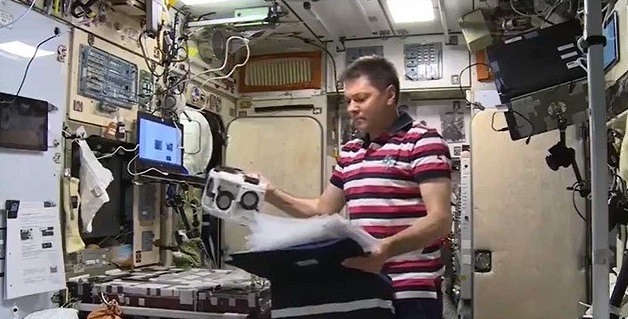
SpiderFab robots are equipped with an extruder that extrudes a finished plastic pipe into drums-containers of large capacity with raw materials, and manipulators for assembling the structure
solar power plants, huge telescopes, etc.
At present, structures that are sent into space have a huge excess safety margin in order to withstand the G-loads at launch. Usually in space, such heavy-duty structures are not needed, but a very large size is needed, for example, for interferometer telescopes. SpiderFab devices will make it possible to build exactly such structures: light, large-sized and with a low life cycle cost.
All necessary parts of the SpiderFab Orbital Manufacturing Facility can be launched into space using existing launch vehicles. In fact, even with today's technology, SpiderFab makes it possible to implement breakthrough projects, such as the construction of space stations beyond the orbit of the Moon or solar power plants with a capacity of hundreds of megawatts. At the same time, the cost of structures produced using SpiderFab will be relatively small. One example of the use of SpiderFab would be the construction of a $200 million space radio telescope with an antenna diameter of more than 100 m. Astronomers today only dream of such an instrument, but SpiderFab technology can make this dream a reality in the coming decades.
At the same time, the cost of structures produced using SpiderFab will be relatively small. One example of the use of SpiderFab would be the construction of a $200 million space radio telescope with an antenna diameter of more than 100 m. Astronomers today only dream of such an instrument, but SpiderFab technology can make this dream a reality in the coming decades.
3. 3D printers for building objects on other planets, for example on the Moon, including from improvised material.
In 2011, NASA published its project for the construction of a lunar base involving a large number of robots (excavators, bulldozers, shredders, etc.).1
Now the European Space Agency has proposed an alternative project for 3D printing a lunar base, using local soil as a building material.
The D-Shape printer from the British company Monolite is used for printing. On the Moon, the printer will be able to use local soil, regolith, as a material.
Regolith is a loose, uneven-grained detrital-dust layer several meters deep, consisting of fragments of igneous rocks, minerals, glass, meteorites, and is well suited for construction.
Pictured is a 1.5 ton building block made by the D-Shape printer as a demonstration. Material used for printing, 99.8% similar to regolith obtained from basalt rocks from one of the volcanoes in central Italy.
The 3D printer's print head walks on a six meter frame. The robot prints at a speed of 2 cubic meters per hour, the final version will print 3.5 cubic meters per hour. The construction of one small building will take about a week.
In the picture below you can see in detail the layout of the project of the European Space Agency. The base consists of four residential modules, of which the central and upper left modules have already been completed, and two more are in the final stages of construction. Residential modules are connected by tunnels, each of them has four porthole hatches. The approximate size of the base can be estimated in comparison with the astronaut, who stands next to the central module.
Now they are trying to use 3D printers in construction on Earth.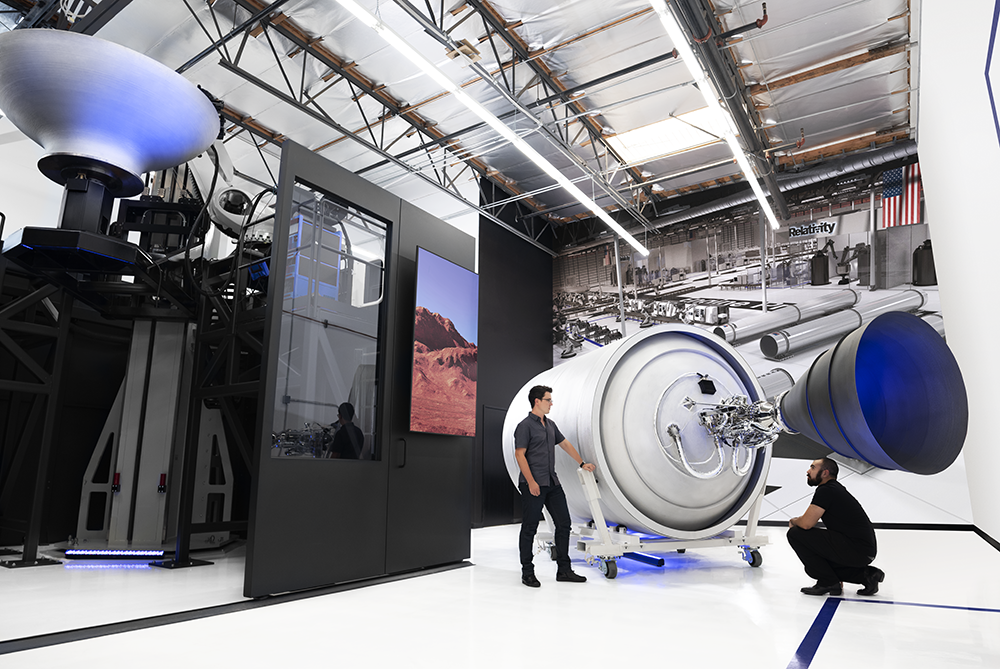 The Chinese company WinSun announced that its new 3D printer will allow you to create affordable and affordable housing in an incredibly short time - in 24 hours the company can print 10 houses of 200 square meters each. The cost of one printed building is about 5 thousand dollars
The Chinese company WinSun announced that its new 3D printer will allow you to create affordable and affordable housing in an incredibly short time - in 24 hours the company can print 10 houses of 200 square meters each. The cost of one printed building is about 5 thousand dollars
4. Food 3D printers
In 2013, NASA announced funding for the development of the world's first 3D printer that will create food1. Such a device will help astronauts during long space flights.
The new printer can prepare food from ingredients stored in powder form in special cartridges. By mixing the contents of different cartridges, adding water or oil, you can get different dishes.
The 3D printer pulverizes the ingredients layer by layer, creating solid 3D food.
The first thing they get with a 3D printer is a pizza. First, the dough will be printed, then the tomato base, and after that the protein layer. In this case, anything can become a source of the protein layer, including animals, milk and plants. Alternative ingredients can be insects and algae.
Alternative ingredients can be insects and algae.
The shelf life of one food cartridge is about 30 years, which is enough, for example, for a flight to Mars.
5. Bioprinters
Perhaps, thanks to the developments of biologists, in the near future, astronauts will not have to carry large volumes of biomaterials with them into space: wood, bones, silk, and even donor organs - all this can be printed from a small number of cells on a 3D printer.
Researchers at Stanford University are developing 3D printing technologies that will allow astronauts to produce biomaterials like tooth enamel or wood directly in space laboratories.0005
The technology involves incorporating cell clusters into a special gel, which is then extruded from a piezoelectric print head, building a matrix to extract the desired material.
At the moment, scientists are setting up equipment and creating a database for all types of cells that exist in nature. No one will take a cow, a sheep, a silkworm or a tree to Mars. However, quality fabric or wood may be needed. Therefore, instead of using the whole organism, including on Earth, you can print a number of cells, from which then produce the desired product.
However, quality fabric or wood may be needed. Therefore, instead of using the whole organism, including on Earth, you can print a number of cells, from which then produce the desired product.
In recent years, developments in the field of 3D bioprinting have been actively carried out around the world. Bioprinters artificially create living tissue by overlaying living cells layer by layer. Currently, all bioprinters are experimental, however, in the future they can revolutionize medicine.
Bioprinters come in different configurations, but the principle is the same: they draw cells from a printhead that moves left-right, front-back, up-down to place the cells where needed. Thus, in a few hours, you can get an organic object, which consists of a huge number of very thin layers.
In addition to cell output, most bioprinters also output a soluble gel to support and protect cells during printing.
In December 2010, Organovo created the first blood vessels using a bioprinter using cells from a single donor.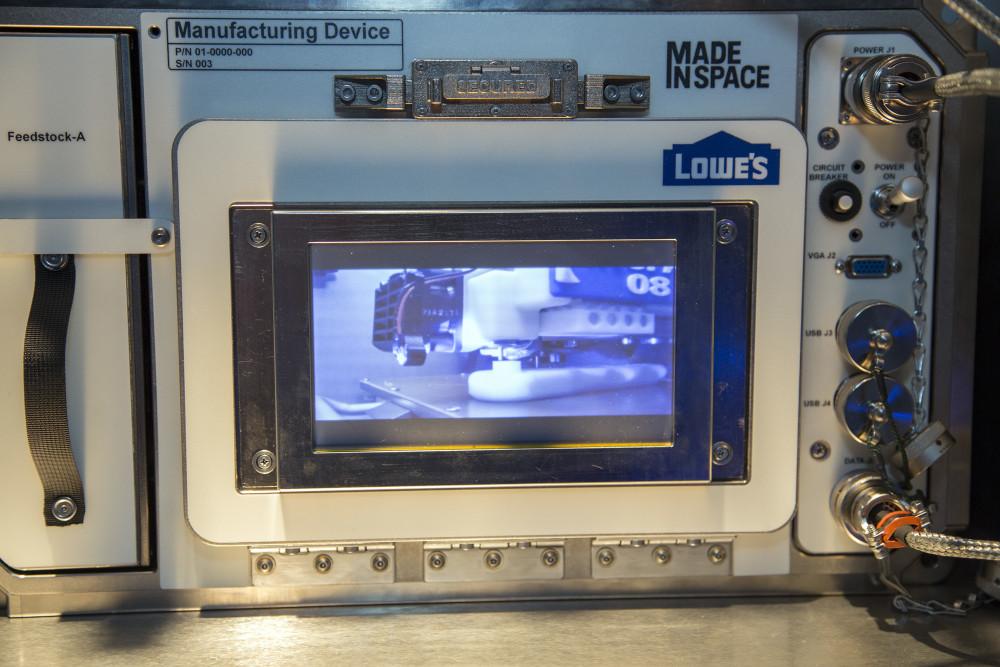 The company has also successfully implanted bioprinted nerves in rats, and experiments to transplant bioprinted tissue into humans are planned for 2015. However, the first commercial application of bioprinters is expected to be in the production of simple human structural tissues for toxicological testing. This will allow scientists to test drugs on bioprinted models of the liver and other organs, thereby reducing the need for animal experiments.
The company has also successfully implanted bioprinted nerves in rats, and experiments to transplant bioprinted tissue into humans are planned for 2015. However, the first commercial application of bioprinters is expected to be in the production of simple human structural tissues for toxicological testing. This will allow scientists to test drugs on bioprinted models of the liver and other organs, thereby reducing the need for animal experiments.
Over time, once human trials are completed, Organovo hopes that bioprinters will be used to produce blood vessel grafts and be used in heart bypass surgery. The company's intentions include the large-scale development of "custom" tissue and organ technologies. It is expected that the first artificially created human organ will be the kidney, since these organs are most in demand during transplantation.
Advances in science will eventually allow organs to be produced in laboratories using bioprinters from a patient's own cells, which could lead to a revolution in medicine. Methods will be developed to print a new tissue or organ directly onto the body. In the next decade, doctors will be able to scan wounds and apply layers of cells to heal them quickly.
Methods will be developed to print a new tissue or organ directly onto the body. In the next decade, doctors will be able to scan wounds and apply layers of cells to heal them quickly.
A team of bioprinting researchers led by Anthony Alata at Wake Forrest School of Medicine has now developed a skin printer. In their initial experiments, they took 3D scans of test injuries inflicted on mice and used that data to control a bioprinter head that sprays skin cells, coagulants and collagen onto the wound. The results of this experiment were also very promising: wounds healed in just two to three weeks (about five to six weeks in the control group).
The bioprinter skin project is partially funded by the US military, which is pushing for in situ bioprinting to treat wounds in combat. Currently, the work is still in the preclinical testing phase. Alata develops technology by experimenting on pigs. However, trials in burn victims could be carried out within the next five years.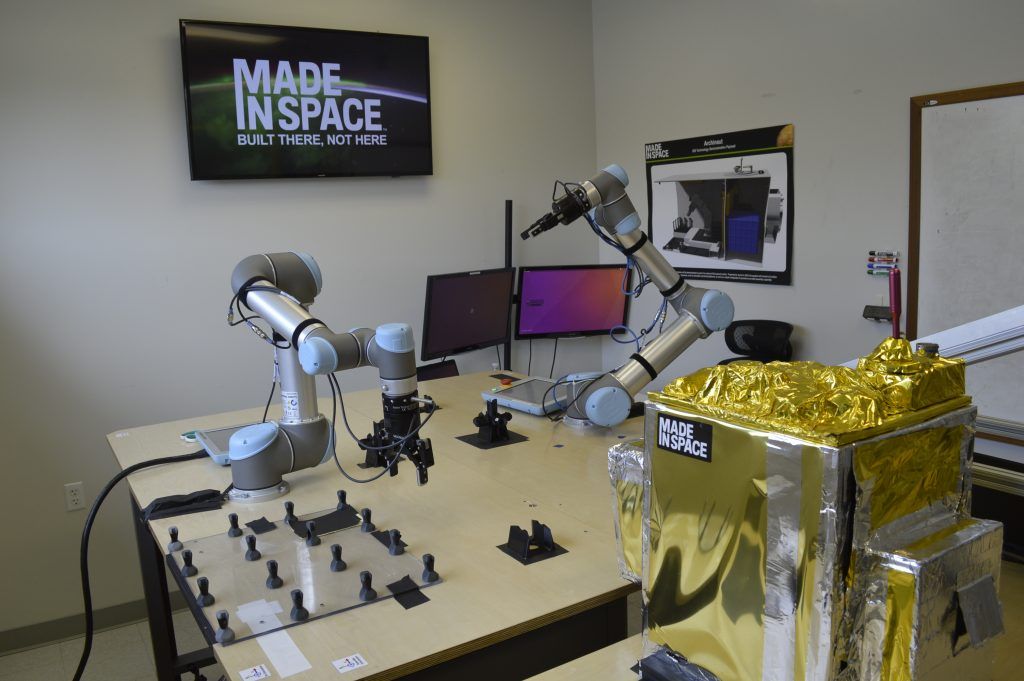
Such bioprinters aboard a spacecraft will help to increase the duration of astronauts' stay in space and solve a number of medical problems.
3D printers in the space industry
Not only in space, but also on the ground, 3D printers can increase the efficiency of the space industry.
Center for Space Flights. Goddard (USA) during the test of a sonic rocket has already sent a battery compartment printed on a 3D printer into flight, and the Space Flight Center. Marshall equipped engines for RS-25 and J-2X rockets with 3D printed components.
In general, 3D printers are used in manufacturing:
- for rapid production of prototypes of models and objects for further refinement or experiment;
- for fast production - production of parts from materials supported by 3D printers, including metal. This allows you to organize the production of complex, massive, durable and inexpensive systems. An example is Lockheed's unmanned aircraft, most of whose parts were made using high-speed 3D printing.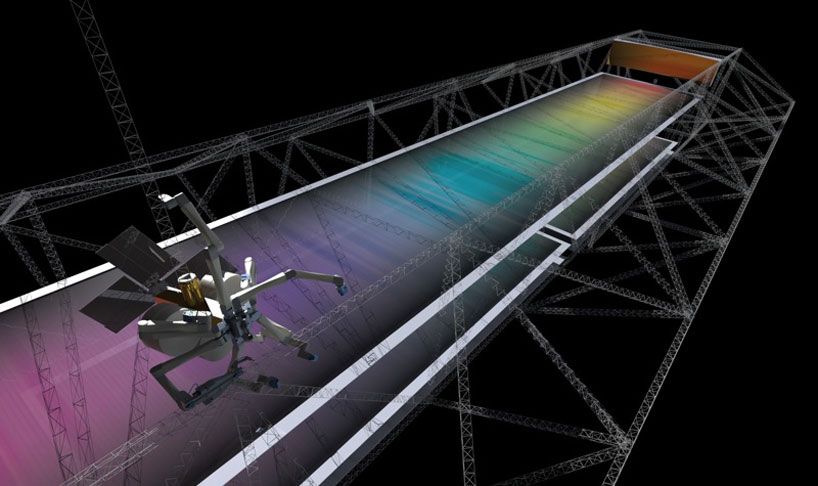
for the manufacture of burn-out models and molds for foundry production.
3D printers are already saving on cost and production time. Soon these savings will be very tangible.
Denis Sesitsky, Leading Engineer, FSUE Arsenal Design Bureau
Report at the Innovative Arsenal of Youth Conference 2014
3D printing and space: the most important thing
901 ships.
3D printing is actively used in the aerospace industry for the manufacture of prototypes, engine parts and tooling. Its use allows the manufacturer to reduce the cost of products, improve their performance, and significantly reduce the time of manufacture of individual products. All major companies involved in aerospace production are turning to additive technologies in one way or another.
Mostly 3D printed engine parts. Thus, the American company Aerojet Rocketdyne has signed a contract for 1.6 billion dollars for the production of the RS-25 rocket engine, some of the parts for which will be made on a 3D printer. Production of a single part by traditional methods could take half a year - 3D printing allowed Aerojet Rocketdyne to reduce time and costs, significantly speed up the prototype production process. In addition, the company successfully uses additive technologies in other projects.
Production of a single part by traditional methods could take half a year - 3D printing allowed Aerojet Rocketdyne to reduce time and costs, significantly speed up the prototype production process. In addition, the company successfully uses additive technologies in other projects.
Another US company, Rocket Lab, is building New Zealand's first orbital launch station. It is from there that it is planned to launch the world's first rocket, the oxygen-hydrocarbon engine of which is completely printed on a 3D printer.
The list would be incomplete without businessman and designer Elon Musk. His company SpaceX has successfully tested 3D-printed SuperDraco engines to be used in the Dragon spacecraft and is also working on the Raptor Rocket propulsion system.
Other industrial giants didn't stop at engines. Blue Origin used over 400 3D printed parts on New Sheppard's first flight in June 2015.
And Boeing has contracted Oxford Performance Materials, a leading additive manufacturing specialist, to produce 600 3D printed parts for the new Starliner space taxis.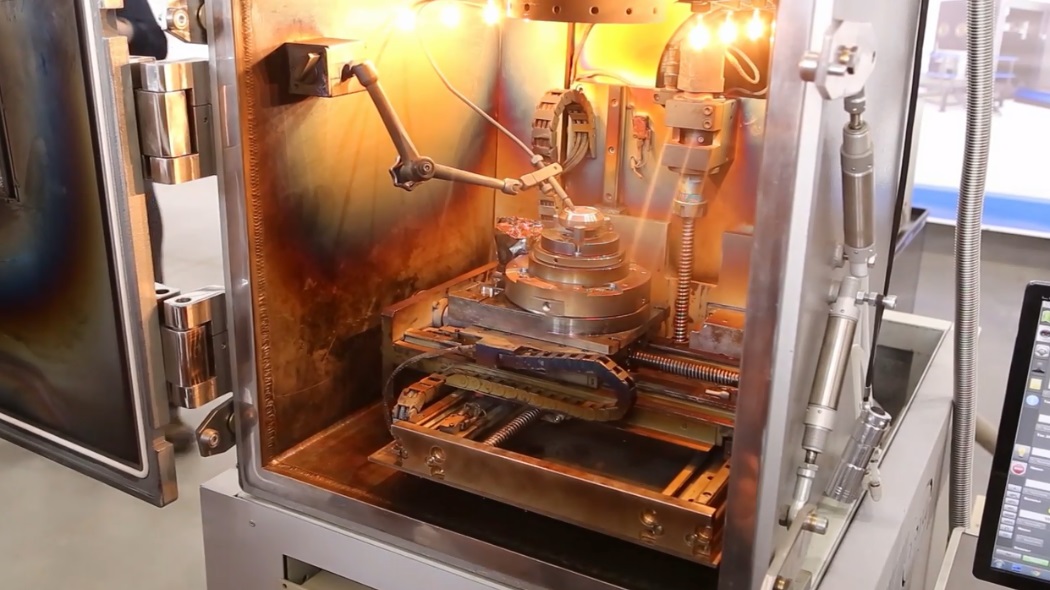
Additive technologies are also used in promising projects of the near future. NASA is using advanced techniques in preparing for a Mars mission: 3D printing is already being used to create prototypes, manufacture parts in space, and even make engine parts for a future ship that will go to Mars.
The Russian aerospace industry is also starting to introduce 3D printing. For these purposes, the Roscosmos Corporation has received a unique domestic 3D printer Router 3131 with a large print field. He will create elements of spacecraft.
2. The use of 3D printing in the production of satellites and devices.
Another direction in the aerospace industry, which we decided to consider separately, is additive technologies in the production of satellites. Unlike a rocket, the cost of a satellite is significantly lower, but it can also be reduced by paying attention to innovative technologies.
Aerospace giant Boeing has done just that by using 3D printing to produce modular satellites.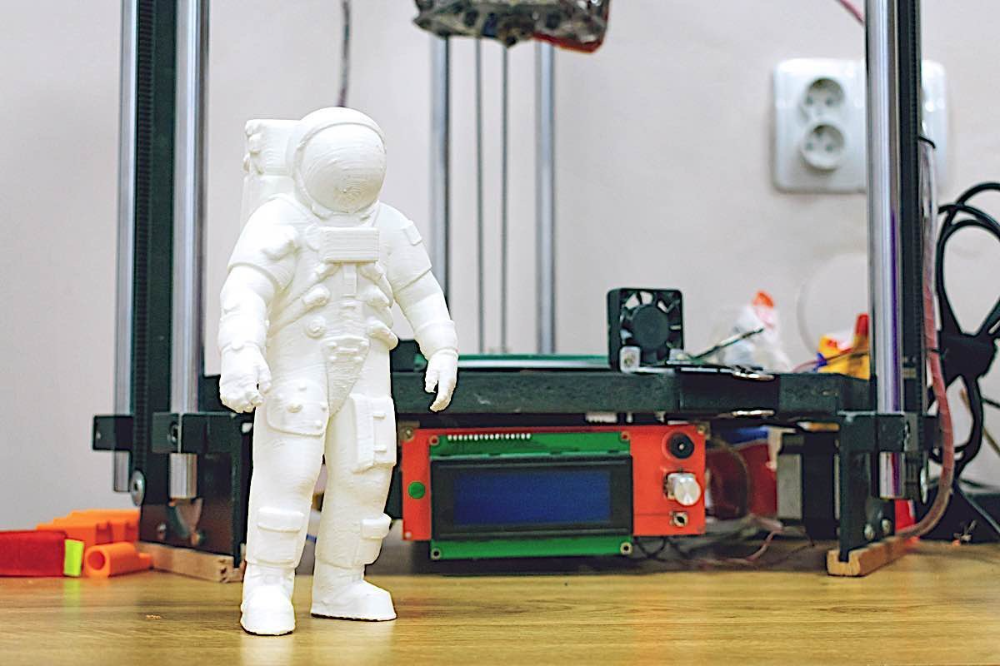 Now one device costs, on average, 150 million dollars - this price is due not only to the high-tech component, but also to the significant cost of the labor force involved in production. When using 3D printers, the cost and production time of satellites are significantly reduced.
Now one device costs, on average, 150 million dollars - this price is due not only to the high-tech component, but also to the significant cost of the labor force involved in production. When using 3D printers, the cost and production time of satellites are significantly reduced.
Small start-ups and research projects have more modest goals, but 3D printing helps them too. A team of researchers at Northwestern Nazarene University in Idaho awaits the launch of their 3D-printed MakerSat satellite, the first in the state, into space. The dimensions of the device are only 10x10x11.35 cm, and it is created from available polymers for 3D printing (ABS, ULTEM and nylon).
High-performance satellite developer Millennium Space Systems recently announced the completion of a pre-production model of the ALTAIR series, which is now being prepared for launch into space. The new technologies used in the design of the satellite will make new space missions possible. For example, 3D printing will save on the cost of sending parts into space and reduce the time it takes to prepare and conduct missions.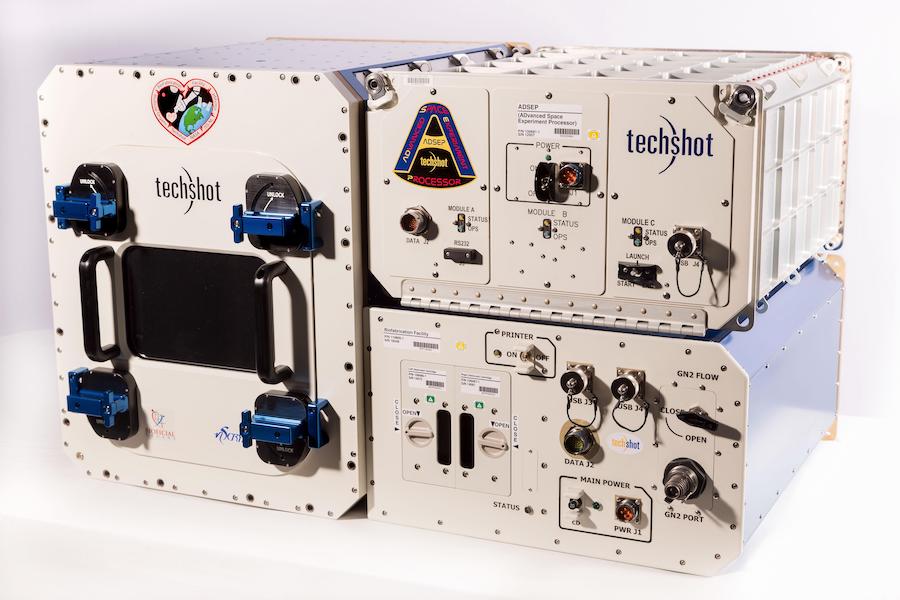
Russian scientists also excelled. In 2016, the Tomsk-TPU-120 small satellite was developed at the Tomsk Polytechnic University. When creating the device, scientists and students of Tomsk Polytechnic University used additive technologies - the frame and most of the components are printed on a 3D printer. On March 31, 2016, the 3D satellite left the Earth and settled in orbit.
Juno flew even further. The NASA space station with that name entered Jupiter's orbit in the summer of 2016. This event is also important for 3D printing, as Juno became the first spacecraft with 3D printed parts - titanium waveguide elements manufactured by Lockheed Martin.
3. Space 3D printers.
Astronauts in orbit often cannot provide themselves with everything they need and have to wait for cargo that arrives at the International Space Station (ISS) during scheduled flights. Unfortunately, during this time the crew is not insured against accidents or breakdowns of important systems. 3D printing experiments in space offer the potential to print needed parts if any parts fail in space. This is very important for future flights to Mars and other planets: for a long time, the colonists will not be able to receive help from Earth. Therefore, in the forthcoming expeditions, it is extremely important to use all available opportunities for the manufacture of products on board ships and space stations.
3D printing experiments in space offer the potential to print needed parts if any parts fail in space. This is very important for future flights to Mars and other planets: for a long time, the colonists will not be able to receive help from Earth. Therefore, in the forthcoming expeditions, it is extremely important to use all available opportunities for the manufacture of products on board ships and space stations.
Such experiments have been carried out on the ISS since 2014. It was then that the Zero G 3D printer manufactured by Made in Space was delivered to the American segment of the station. The first print took place on November 24, 2014 and marked a new era in the development of 3D technologies. The printed object was a part of the printer itself, the faceplate of the printhead, symbolizing the ability to one day print a 3D printer in space on a 3D printer. In 2016, another Made in Space printer called the Additive Manufacturing Facility (AMF) was delivered to the ISS.
Since then, print trials on the ISS have taken place regularly.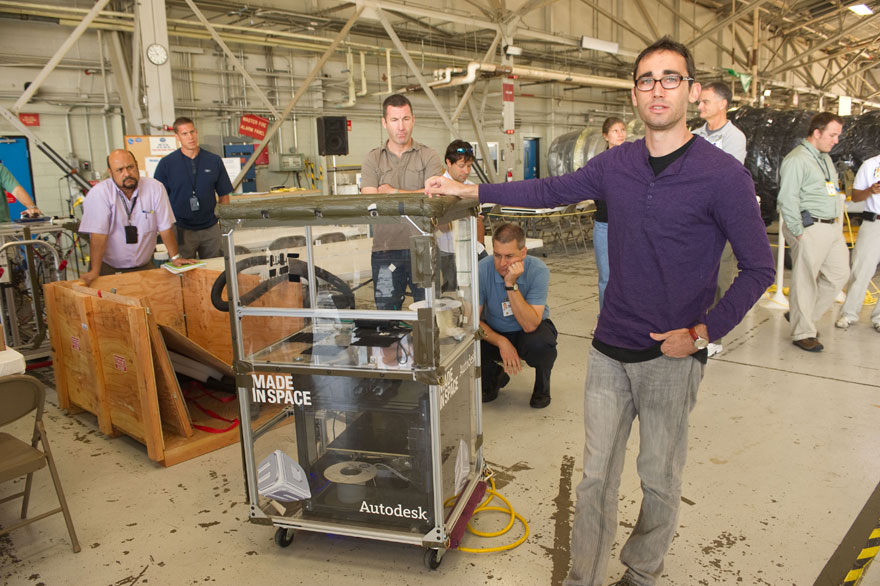 One of the latest ideas was an innovative plan by the Canadian company 3D4MD, which involved printing medical devices, such as splints or surgical instruments, on the ISS. To create devices such as custom splints for broken fingers, 3D4MD's developers could use, for example, measurements taken during the preparation of spacesuits and create a model on Earth. The 3D model can then be sent to the ISS, where the tire will be 3D printed.
One of the latest ideas was an innovative plan by the Canadian company 3D4MD, which involved printing medical devices, such as splints or surgical instruments, on the ISS. To create devices such as custom splints for broken fingers, 3D4MD's developers could use, for example, measurements taken during the preparation of spacesuits and create a model on Earth. The 3D model can then be sent to the ISS, where the tire will be 3D printed.
Roscosmos is also developing a similar project. An experiment called "3D printing" should confirm the possibility of using a 3D printer in the absence of gravity. This device was created within the walls of the Tomsk Polytechnic Institute and agreed with the engineers of RSC Energia. The printer will go to the ISS in 2018.
Not being able to conduct experiments in space, other powers organize experiments on the ground. A development team from China recently successfully tested the first 3D printer designed for weightless conditions. Many difficult tests were carried out in the French city of Bordeaux.
4. 3D bioprinting in space.
It is known that in outer space there is electromagnetic and radiation radiation that has a detrimental effect on biological tissues. In order for the astronaut to be able to endure all the hardships of the flight, the protection of the ship alone is not enough - it is necessary to think about high-quality medical care. And if it does not help, then it’s about replacing any organs.
That is why the Russian United Rocket and Space Corporation (ORSC) agreed on an experiment to use a 3D bioprinter on the International Space Station (ISS). Its developer was the Russian laboratory 3D Bioprinting Solutionsspecializing in bioprinting technologies. Scientists hope that the magnetic bioprinter will make it possible to create tissues and organs in space. It is expected that the device will be delivered to the ISS by 2018.
There are no analogues of the Russian project abroad yet.
5. Construction of structures using construction 3D printing.
Construction of structures using construction 3D printing.
One of the most basic problems in constructing buildings on extraterrestrial objects is the limited amount or lack of building material. The only available raw materials that do not need to be transported from our planet are local geological rocks. It is not surprising that scientists are solving the problem of using them in the construction of buildings.
For example, engineers at Northwestern University in the US have found a way to use quality materials in situations where resources are limited. We are talking about the process of additive manufacturing from special materials that mimic the lunar and Martian regolith. These are strong and elastic materials that are produced using powdered substances that resemble rocks from the surface of the Moon and Mars.
It is likely that this technology will be used in the colonization of Mars. Due to extreme temperatures and high radiation on the surface of the "red planet", the first colonizers will need reliable shelters.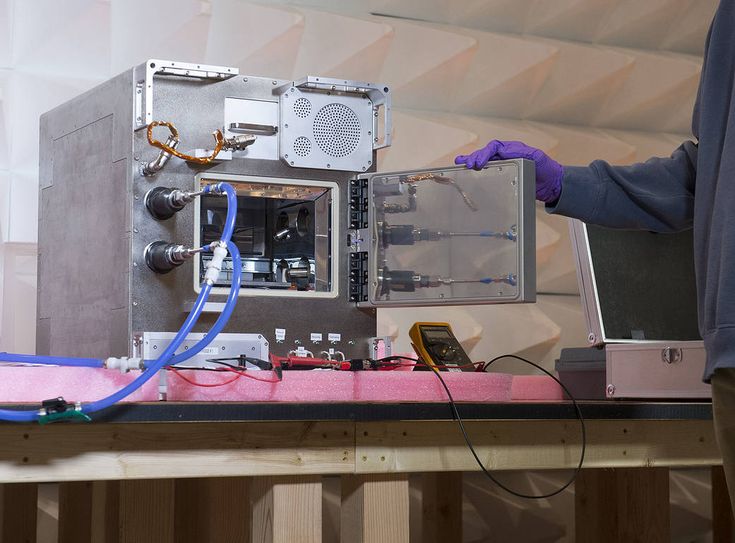 NASA experts propose using 3D printing to create a "dome" of ice from the surface of Mars, covered with a transparent membrane of fluoroplast-40. One of the main advantages of a water-based dwelling is that such walls protect from cosmic radiation, but do not prevent the penetration of light - this creates some comfort. In addition, when choosing materials, other criteria were taken into account - their strength and reliability, the ability to withstand the difficult conditions of Mars.
NASA experts propose using 3D printing to create a "dome" of ice from the surface of Mars, covered with a transparent membrane of fluoroplast-40. One of the main advantages of a water-based dwelling is that such walls protect from cosmic radiation, but do not prevent the penetration of light - this creates some comfort. In addition, when choosing materials, other criteria were taken into account - their strength and reliability, the ability to withstand the difficult conditions of Mars.
The European Space Agency (ESA) is working in the same direction and has already achieved some results. Scientists from the Austrian University of Applied Sciences in Wiener Neustadt managed to 3D print a small needle and a corner wall from JSC-Mars-1A material, which mimics Martian soil.
In addition to serious research, there are quite unexpected projects. So, experts from the ESA we mentioned thought about saving the souls of the first lunar colonists and planned to build a temple on the moon using 3D printing.


